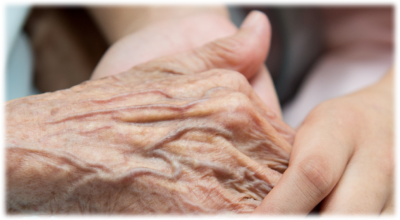 Stress Reaction is a term being used more often to describe communication in persons living with dementia. Behavioral expression, too, is communication. In a growing number of circles, the term behavioral expression is being replaced by stress reaction simply because behaviors sometimes leans toward being a negative descriptive of how persons with dementia express unmet needs.
Stress Reaction is a term being used more often to describe communication in persons living with dementia. Behavioral expression, too, is communication. In a growing number of circles, the term behavioral expression is being replaced by stress reaction simply because behaviors sometimes leans toward being a negative descriptive of how persons with dementia express unmet needs.
Stress reaction is communication that is caused by changes taking place in the brain caused by the progression of dementia. These changes can cause behaviors such as:
- Aggression
- Irritability
- Pacing or wandering
- Withdrawing
- Resistance to care
- Crying
- Yelling
It is important for care partners to understand that stress reaction is always caused by an unmet need. The most common causes of unmet needs can be categorized in the following areas:
- Physical discomfort – perhaps caused by pain, hunger, thirst, fatigue or other barriers.
- Nonsupportive environment – this might include noise, chaos, inadequate lighting, temperature changes or excessive clutter.
- Unmet social needs – boredom, lack of sense of purpose, lack of companionship, touch deprivation are some examples.
- Ineffective care partnering – examples include unrealistic expectations from caregivers, distrust from either care partner or inappropriate care (care that is not conducive to caring for persons with dementia)
Now that we’ve discussed stress reactions from persons living with dementia, we must then look at stress reactions from caregivers. Understanding that it is how we as caregivers react to their stress reactions, is a core value of person-centered caring practices.
We cannot control their behavior, but we can control how we respond to their behavior. Healthy care partnering means we understand that they cannot change what’s going on in their brain. Their behaviors or stress reactions are a response to unmet needs, and it is the care partner’s responsibility to put the puzzle pieces together to help their care partners meet their unmet needs!
A few basic guidelines for care partners to keep in mind when there is a stress reaction:
Allow adequate space (in other words, step back if necessary)
The rule is always safety first for both care partners
Observe the environment, and what can quickly be changed, such as taking the person from a noisy room to a calm atmosphere
Observe body language and facial expressions, especially if the person is non-verbal. What might they be trying to express? And care partners, observe your own body language and expressions, as your stress reaction can either cause the situation to escalate or de-escalate
Watch your tone of voice! It’s amazing how a calming voice will immediately bring calm to another person. And just the opposite is true. If stress reaction is met with similar behavior, it’s almost always a certainty that the outcome will not be positive.
And finally, learn techniques and tools that can prevent stress reactions. Touch, music, redirection techniques, companion pets or dolls and more can have amazing outcomes and are simple to implement with the correct training.
Pam Brandon is the President/Founder of AGE-u-cate® Training Institute, creator of the Dementia Live® Sensitivity and Empathy Training program and directed the development of Compassionate Touch® for persons living with dementia and end-of-life. She is a passionate advocate for older adults and those who care for them.
 It the first sense to develop in the womb and one of the last ones to go during the dying process.
It the first sense to develop in the womb and one of the last ones to go during the dying process. What exactly is the meaning of Life Enrichment?
What exactly is the meaning of Life Enrichment?  “Touching as a therapeutic event is not as simple as a mechanical procedure or a drug, because is, above all, an act of communication…the use of touch and physical closeness may be the most important way to communicate to acutely ill (and aged) persons that they are important as human beings…” – Ashley Montagu
“Touching as a therapeutic event is not as simple as a mechanical procedure or a drug, because is, above all, an act of communication…the use of touch and physical closeness may be the most important way to communicate to acutely ill (and aged) persons that they are important as human beings…” – Ashley Montagu